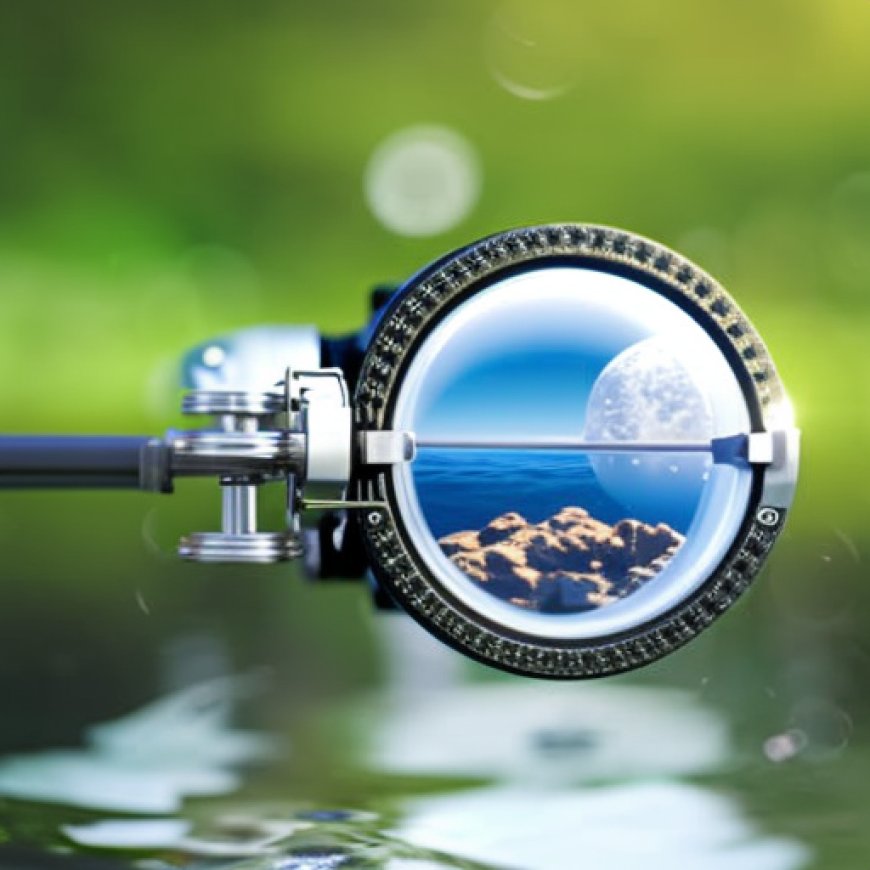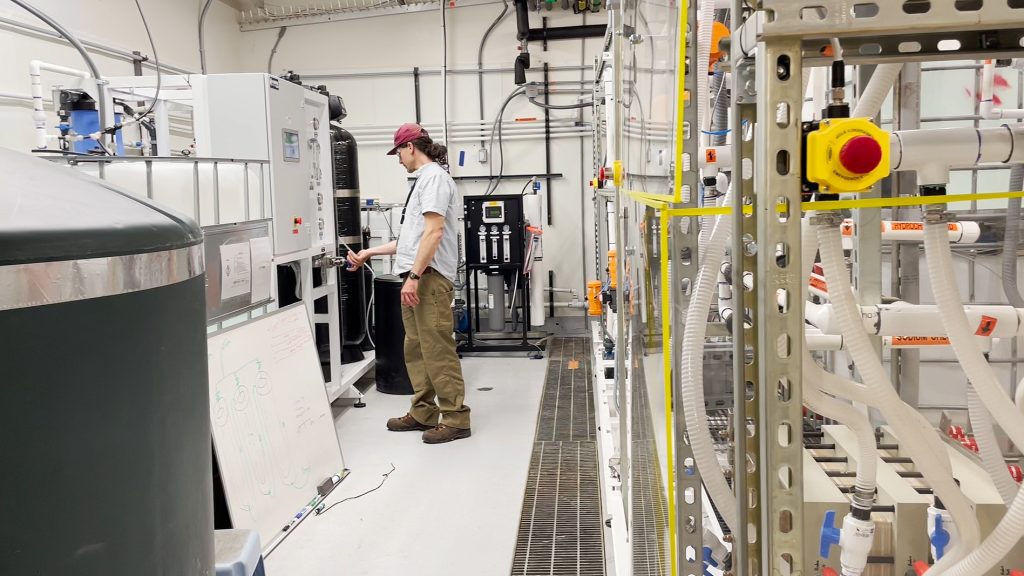New system uses seawater to capture and store CO2 – NOAA Research
New system uses seawater to capture and store CO2 noaa.gov


A New System for Removing Acid from Seawater to Mitigate Climate Change and Ocean Acidification
A new system has been implemented at the U.S. Department of Energy’s Pacific Northwest National Laboratory (PNNL) facility in Sequim, Washington, to remove acid from seawater. This system, which is approximately the size of a shipping container, allows seawater to absorb and store carbon dioxide (CO2) from the atmosphere. The development of this technology represents a significant step in research aimed at mitigating climate change and ocean acidification.
Partnerships and Funding
The carbon dioxide removal system was developed by start-up company Ebb Carbon in collaboration with PNNL, NOAA’s Pacific Marine Environmental Laboratory, the NOAA Cooperative Institute for Climate, Ocean and Ecosystem Studies (CICOES), and the Salish Sea Modeling Center at the University of Washington. Funding for the project was provided by NOAA’s Ocean Acidification Program, the U.S. Department of Energy’s Water Power Technologies Office (WPTO), and the ClimateWorks Foundation.
Importance of the Sustainable Development Goals (SDGs)
This innovative system aligns with the Sustainable Development Goals (SDGs), particularly SDG 13: Climate Action. By removing carbon dioxide from the atmosphere and mitigating ocean acidification, this technology contributes to efforts to combat climate change and protect marine ecosystems.
Marine Carbon Dioxide Removal and its Role in Limiting Global Warming
Marine carbon dioxide removal is a crucial strategy for limiting global warming to 1.5°C, as recommended by the Intergovernmental Panel on Climate Change. The ocean has significant potential for carbon removal; however, many questions remain regarding this research area.
Research and Decision-Making
The knowledge gained from this research will inform decision makers and stakeholders about potential future approaches to marine carbon dioxide removal. Dwight Gledhill, acting director for the NOAA Ocean Acidification Program, emphasizes the need for multiple mitigation tools to build a climate-ready future.
NOAA’s Carbon Dioxide Removal Strategy
In June 2023, NOAA released its Carbon Dioxide Removal Strategy, which outlines potential research contributions in four key areas: observing networks, modeling, scaling and projections of carbon dioxide removal pathways, environmental impacts, and decision support. The strategy does not endorse any specific technique.
The Ebb Carbon System
Ebb’s system processes seawater from Sequim Bay, which is pumped into PNNL-Sequim’s marine lab. The seawater passes through membranes that act as filters, removing acid from the water. Once the acid is removed, the seawater can absorb additional carbon dioxide from the air and store it as bicarbonate. Bicarbonate is a durable and naturally abundant form of carbon storage in the ocean.
The treated seawater will be held in open air tanks for research purposes before being returned to the ocean through PNNL’s existing wastewater system. The research team is also exploring the possibility of powering the Ebb system using marine energy sources such as waves, tides, currents, salinity gradients, thermal gradients, and pressure gradients.
Local Applications and Benefits
The low-carbon acid produced by the system can be used to neutralize alkaline wastewater locally. Ebb is in discussions with local sand and gravel operations that can utilize the acid to neutralize alkaline stormwater.
Restoring Ocean Chemistry and Combating Climate Change
Ebb’s technology accelerates the natural process of restoring ocean chemistry by neutralizing excess acidity caused by human-generated CO2 emissions. This process helps protect marine ecosystems. The system enables seawater to convert atmospheric carbon dioxide into bicarbonate, the ocean’s natural storage solution for carbon dioxide, without increasing acidity. At scale, this technology can contribute to removing already-emitted carbon dioxide from the atmosphere, which is crucial for meeting climate targets.
Collaboration for a Sustainable Future
Jan Mazurek, senior director of Carbon Dioxide Removal at the ClimateWorks Foundation, highlights the importance of oceans in combating climate change. The collaboration between federal partners, the University of Washington, and Ebb Carbon aims to ensure that marine carbon dioxide removal approaches are safe for marine life, coastal communities, and Indigenous peoples while fostering conditions for ongoing innovation and creating new clean energy jobs.


SDGs, Targets, and Indicators
1. Which SDGs are addressed or connected to the issues highlighted in the article?
- SDG 13: Climate Action
- SDG 14: Life Below Water
The article discusses the development of a system to remove carbon dioxide from seawater, which is relevant to addressing climate change (SDG 13). It also mentions the importance of mitigating ocean acidification, which is crucial for preserving marine ecosystems and life below water (SDG 14).
2. What specific targets under those SDGs can be identified based on the article’s content?
- SDG 13.2: Integrate climate change measures into national policies, strategies, and planning.
- SDG 14.3: Minimize and address the impacts of ocean acidification.
The article highlights the research and development of a carbon dioxide removal system, which aligns with the target of integrating climate change measures into national policies and strategies (SDG 13.2). Additionally, the focus on mitigating ocean acidification through carbon dioxide removal relates to the target of minimizing and addressing the impacts of ocean acidification (SDG 14.3).
3. Are there any indicators mentioned or implied in the article that can be used to measure progress towards the identified targets?
- Indicator for SDG 13.2: Number of policies, strategies, and plans that integrate climate change measures.
- Indicator for SDG 14.3: Changes in ocean pH levels and acidity.
While the article does not explicitly mention specific indicators, progress towards SDG 13.2 can be measured by tracking the number of policies, strategies, and plans that integrate climate change measures. For SDG 14.3, changes in ocean pH levels and acidity can serve as indicators to assess the effectiveness of carbon dioxide removal systems in minimizing ocean acidification.
4. Table: SDGs, Targets, and Indicators
| SDGs | Targets | Indicators |
|---|---|---|
| SDG 13: Climate Action | 13.2: Integrate climate change measures into national policies, strategies, and planning. | Number of policies, strategies, and plans that integrate climate change measures. |
| SDG 14: Life Below Water | 14.3: Minimize and address the impacts of ocean acidification. | Changes in ocean pH levels and acidity. |
Behold! This splendid article springs forth from the wellspring of knowledge, shaped by a wondrous proprietary AI technology that delved into a vast ocean of data, illuminating the path towards the Sustainable Development Goals. Remember that all rights are reserved by SDG Investors LLC, empowering us to champion progress together.
Source: research.noaa.gov

Join us, as fellow seekers of change, on a transformative journey at https://sdgtalks.ai/welcome, where you can become a member and actively contribute to shaping a brighter future.







